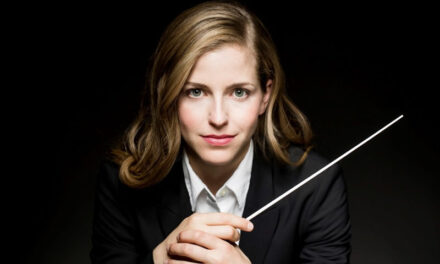The concluding fourth concert of the Ciompi Quartet’s season, presented under the auspices of Duke Performances, was very special. Beyond the ensemble’s regular presentation of the core quartet repertoire has been their commissioning of new works and revivals of works unjustly neglected. This concert featured a quartet by the virtuoso violinist rival of Paganini, Heinrich Wilhelm Ernst (1812-65), followed by the world premiere of a commissioned quartet by Pulitzer Prize-winning composer Melinda Wagner (b.1957). The Ciompi Quartet has never neglected great chamber music requiring one or more extra musicians. Durham born piano prodigy Andrew Tyson and French violinist Gabriel Richard joined the quartet for a rare performance of Concert, Op. 21, for violin, piano, and string quartet, by Ernest Chausson (1855-99). The members of the Ciompi Quartet are violinists Eric Pritchard and Hsiao-Mei Ku, violist Jonathan Bagg, and cellist Fred Raimi.
Heinrich Ernst was born in Brno, Moravia, whence his talent led him to be educated at the Vienna Conservatory of the Gesellschaft der Musikfreunde. Ernst was influenced directly and indirectly by Paganini. The younger violinist hid in the halls during rehearsals or eavesdropped and copied some of the older violinist’s works. (Paganini collected all scores immediately after performances.) Ernst helped develop polyphonic playing technique and also discovered new idiomatic ways to compose polyphonically conceived violin music. While the two violinists were rivals, the public was split. Many thought Paganini mastered the technical difficulties better while Ernst played with more feeling.
Most of Ernst’s compositions were intended for his own use, but when he moved to London in 1844 and joined the Beethoven Society, he also formed a string quartet in which he played viola; his violinists were Joseph Joachim and Henri Wieniawski with cellist Alfredo Piatti – a super-star roster. Ernst’s Quartet in B-Flat, Op. 26, is a fine piece, melodically rich, with plenty of interest shared among all four players. The quartet is in the standard four movements, and all four instruments are given prominent solo passages. In a departure from the norm, the first statement of the theme is given to the second violin in the opening movement. The slow second movement has a lovely melancholy melody in G minor that builds in intensity. A playful tune on the solo viola opens the witty third movement. The finale begins fast, slows in tempo in the middle before rushing to a rousing conclusion.
Composer Melinda Wagner prefaced the world premiere of My Tioga (2014) with the trials of composing while her husband and son, both percussionists, rehearsed on either side of her in a home across from a hospital. She speculated some of that hectic energy may have seeped into her six-movement piece of whimsical and nostalgic reflections of growing up in the countryside of Tioga County, Pennsylvania. A sad viola melody opens “Damsel Fly.” Its permutations evoke the darting visits of fragile pond visitor. “Rock Run” is rhythmically complex with some rich melody for the cello and some brash and high harmonics for the rest. Its twists and turns suggest a stream dashing over rough rocky terrain. Harsh pizzcatos, complex rhythms, and intense long-held notes characterize the tenacious “Bug.” “Milkweed” is both lilting and sad. Some of Wagner’s chaotic surroundings must have crept into her scoring of “Mad Bramble” as its “rushing tangle of notes” evokes the composer’s memory of a thicket behind the family barn. A hymn-like melody skirting tonality in “Little Church in Nauvou” evokes a white clapboard church. The Ciompi musicians gave a deeply committed performance which met the composer’s tonal and rhythmic challenges. High harmonics were precisely played.
Ernest Chausson (1855-99) began his musical studies with Jules Massenet (1842-1912) at the Paris Conservatory before switching to study with César Franck (1822-90). Franck and Richard Wagner’s influence weigh heavily on Chausson’s unusual Concert[o], Op. 21. Michel Faure, in his program note for a 1990 Decca recording, suggests it is “a dramatic sonata with violin and piano as the leading characters … with the quartet as their foil.”
Chausson, with the three notes D, A, E in the introduction, uses Franck’s cyclic structure to unify the whole work. The scoring of the first movement is full and rich, almost orchestral. The light second movement, a sicilienne, “hovers between tenderness and impish grace” and provides a welcome contrast. The third movement, Grave, is dominated for much of its length by a dirge played by the violin and piano. An underlying sadness haunts the finale marked “Trés animé.”
Violinist Richard, pianist Tyson, and the Ciompi Quartet turned in a passionate, rich-textured performance of great intensity. Richard produced a gorgeous palette of tone and blended beautifully with Pritchard’s violin from time to time. Tyson’s dynamics ranged from thundering chords to fleeting solos of great delicacy. On some recordings at least, the quartet portion can sound monochromatic. The Ciompi’s performance brought out a more complex and differentiated sound that was most welcome. The enthusiastic audience response was rewarded with a repeat of the gossamer second movement Sicilienne.











